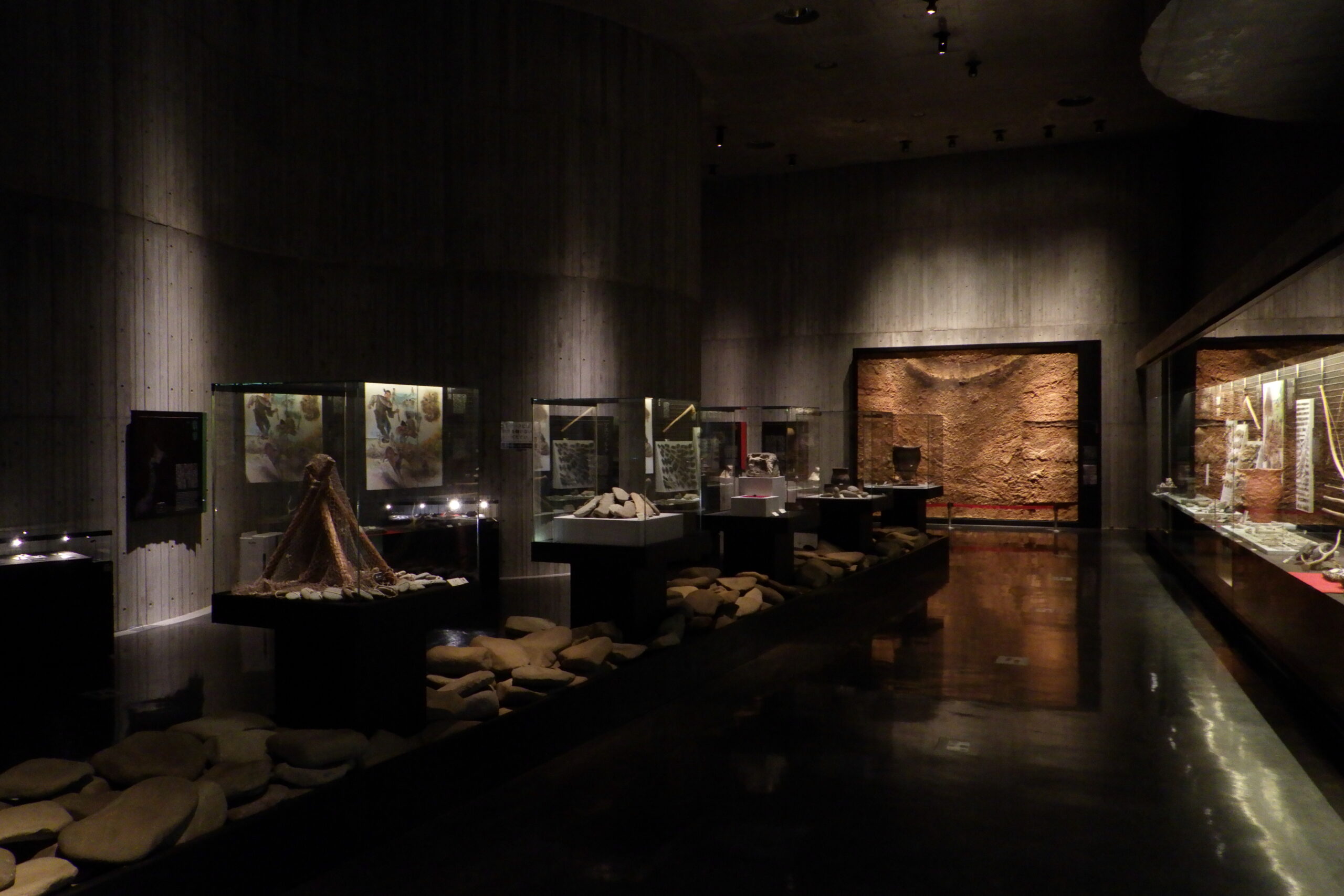This museum introduces the history and nature of Esashi Town and its neighboring areas. In particular, numerous exhibits here feature artifacts and other archaeological finds of the cultures that thrived in Hokkaido from the time of the Yayoi period to the Kamakura period of Japan’s main island. The cultures are Epi-Jomon culture, Satsumon culture, and Okhotsk culture, which prospered in the areas surrounding the Sea of Okhotsk.
施設
Tsunami Memorial Hall
This memorial hall opened in 2001, eight years after a huge earthquake and tsunami struck the remote Okushiri Island, in order to keep memories of the disaster alive and convey to future generations the lessons learned in the disaster’s aftermath. Eight themed exhibition areas feature records of the disaster and recovery from it.
Nanae Historical Museum
This museum features the history, nature, and industry of Nanae Town. It collects and preserves materials to offer exhibitions and educational programs, all the while engaging in studies on complete history from the prehistoric age to the Meiji era (the late 19th century) and on livelihoods centered on agriculture.
Kida Kinjiro Museum of Art
This museum is a forum for communication that brings together Iwanai Town, paintings by Kinjiro Kida, and visitors.
Kinjiro spent his life painting the natural splendor of Iwanai, and the museum was established to encourage people to learn about his works and life. Beyond displaying his paintings, the facility also holds events to bring visitors closer to the nature and town of Iwanai and to people associated with the town. The facility will continue to offer various opportunities for communication and excitement in collaboration with local facilities and the community.
Keiyu Nishimura Museum of Art
This museum opened on November 1, 1999. It houses and exhibits works by Keiyu Nishimura, including his familiar, soft-colored paintings. Keiyu was a Western-style painter from Kyowa Town who led a prolific career in Paris after World War II. The museum also offers various programs to enjoy art. The museum’s unique exterior, which features lots of glass and curves, and the views of the Niseko Mountains and the bucolic surroundings are also not to be missed.
Kan Yasuda Sculpture Museum – Arte Piazza Bibai
At this art park, everyone living in our modern age can spend as much time as they wish free from worry about the outside world.
e space turns memories of the coal mining city’s vicissitudes and of people’s thoughts about them into the energy of the locale, having existed and continuing to exist with an air of serenity. The City of Bibai and Kan Yasuda, the famed sculptor from Bibai, will keep working to make the museum an irreplaceable space.
Hakodate Jomon Culture Center
This facility features the history and culture of the Jomon period in areas centered on the Minamikayabe area of Hakodate City. In addition to introducing people’s lifeways, which were based on hunting, fishing, and gathering, the center displays lacquerware, asphalt, jade, and other items used as barter, as well as the only National Treasure in Hokkaido: a hollow clay figurine.
Samani Folk Museum
Opened in 1967, this museum exhibits materials concerning Tojuin Temple, which was founded as one of “the Three Government Temples of Ezo,” as well as archaeological materials, Ainu folk materials, local articles of everyday use, and the like.
Shiriuchi Town Museum
Teine Memorial Museum
This museum opened in 1969 in commemoration of the merger between Teine Town and Sapporo City. It displays a large number of materials of historical significance, including those primarily illustrating the days of land reclamation in Teine, those describing local history to the present, and archaeological finds unearthed from the Teine Site, as well as ancient documents and everyday tools. The lecture hall and Japanese-style room inside the museum are open to local residents for community activities and as a place of recreation and relaxation.










